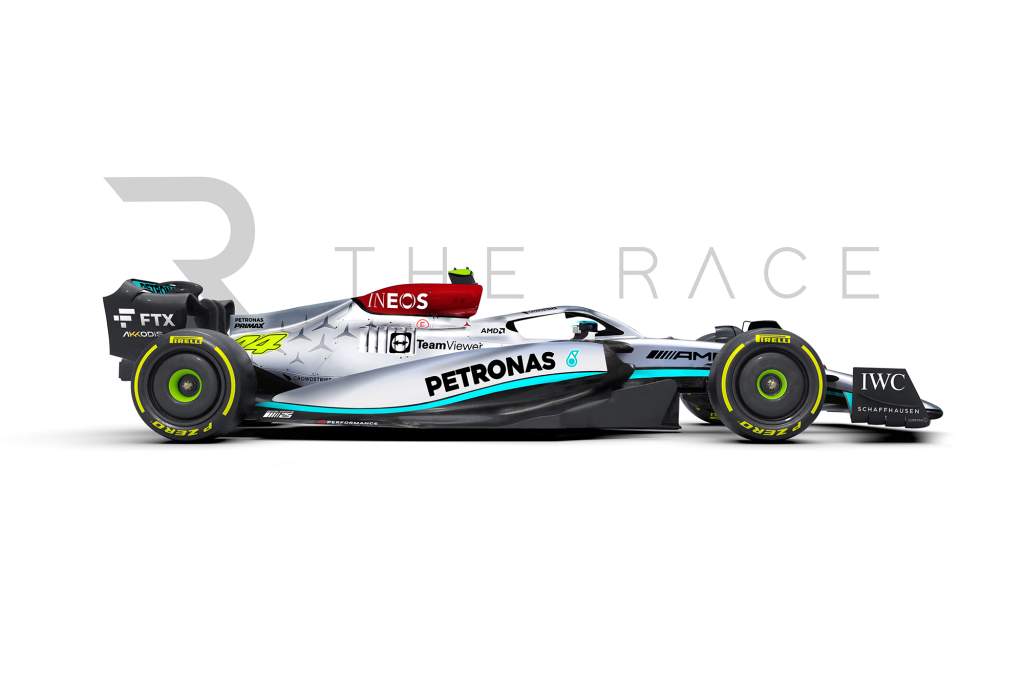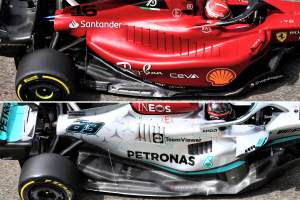Up Next

The Mercedes Formula 1 team has been out on its own with the zero-sidepod concept that generated so much interest early in the 2022 season.
But with the team turning its attention fully to 2023 as its final upgrade for this year’s troubled W13 appears at the United States Grand Prix this weekend, the question remains: will Mercedes abandon the design it has been alone in pursuing for this year, and follow the trend for bigger sidepods that everyone else either started with or has gravitated towards during the first year of F1’s new rules?
The team doesn’t want to give too much away on that front, but the clues are building up.
Mercedes turned heads when its heavily updated car arrived in Bahrain for the second pre-season test, and it looked like the team had forgotten to put the sidepods on.
This looked like the latest evolution in the ‘size zero’ packaging that had become a common trend for F1 designers to chase over the last decade, as it allowed more airflow to travel down the side of the car and inside the rear wheels into the coke bottle area.
By the end of the previous regulations cycle in 2021, every team on the grid was trying to make the sidepods as narrow as possible, giving a shrink-wrapped effect to the bodywork.
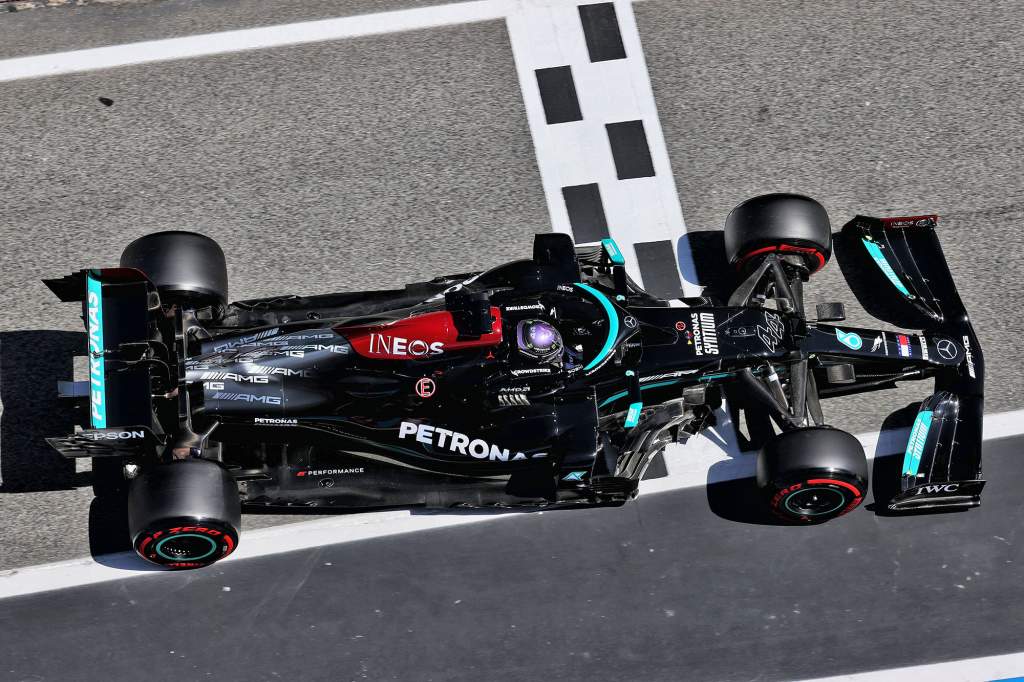
Mercedes had taken that to the next level for the start of the new rules in 2022, and had crucially found a way to get around the restrictions on the shrinking of the front of the sidepods with a clever interpretation of how the mandatory side impact structures had to be incorporated into the car.
Technical director Mike Elliott recently admitted on F1’s own podcast that when Mercedes discovered this loophole, another group within the design team then worked on it to see if they could “shoot it down” – which is a regular practice within the team when a new idea is found, with the group trying to sense-check the idea “generally run by our chief designer”.
Once Mercedes committed to the sidepod concept, it also had to show it to the FIA. Elliott said the governing body’s reaction was along the lines of “that’s not what we intended”, but after the FIA’s technical department took a closer look to see if it could legally challenge it, the design was considered legal.
Mercedes spent the winter thinking “‘has anybody else spotted it, is someone else going to turn up with it?'” according to Elliott, but perhaps he needn’t have worried.
In fact, when Red Bull’s design genius Adrian Newey told The Race that he “didn’t see the Mercedes sidepod solution coming”, maybe that should have set alarm bells ringing – rather than sounding like a badge of honour for the Mercedes design team to have outwitted one of F1’s greatest ever technical minds.
And those alarm bells should have kept ringing. The only two other teams on the grid who initially went in a different direction to the bigger, longer sidepods that came back into fashion this year were Williams and McLaren. And over the course of this season, both have introduced updates that have abandoned their slimmer designs to go down the bulky route.
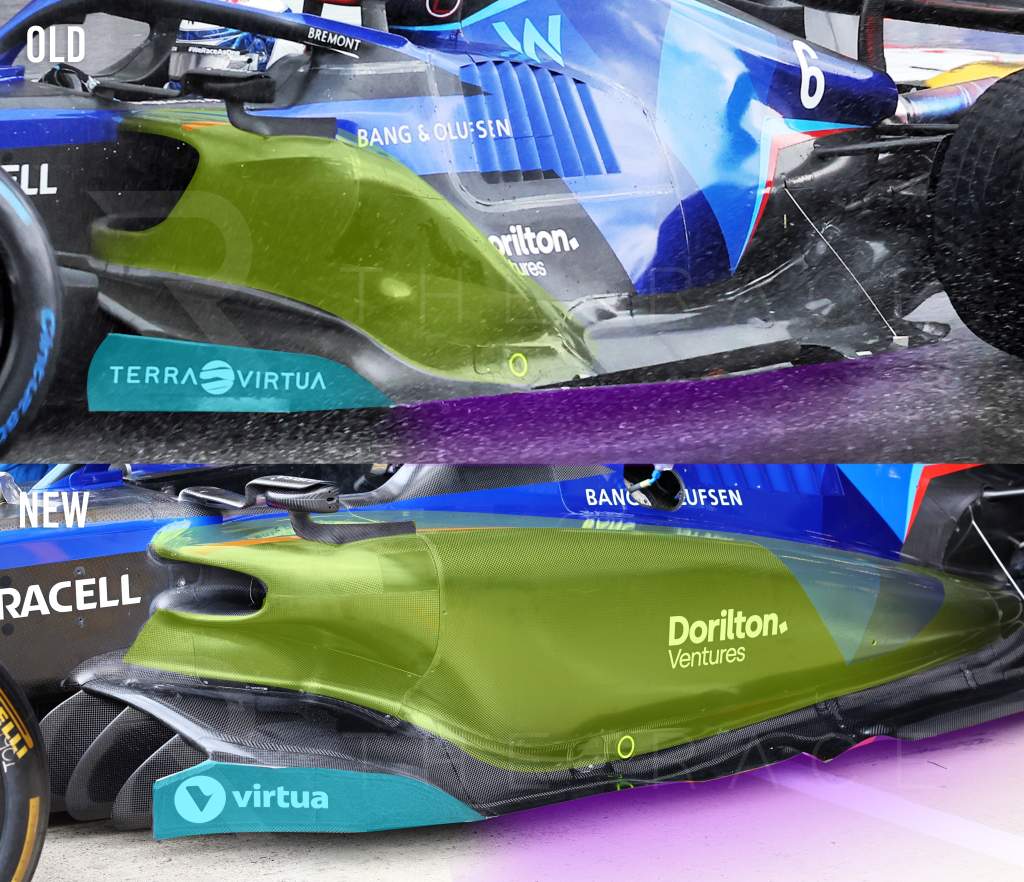
We’ve also seen teams that started the year with varying approaches to the bigger sidepods make further significant developments in this area while keeping the core concept. So it seems unlikely that everyone is just keeping quiet about their super-secret zero-sidepods for 2023.
Even if the other teams couldn’t copy the Mercedes concept until next year for fundamental reasons of car layout, those teams wouldn’t have put in the amount of effort they have into refining the bigger sidepods if they were going to abandon them next year.
If no other team thinks the skinny sidepods are worth doing, at what point does Mercedes have to ask itself if it’s being really clever or really naive to remain out on its own following a different path?
During his recent appearance on F1’s Beyond the Grid podcast, Elliott also revealed that he can point to the specific moment during the car design process late in 2021 when Mercedes made an error.
He wouldn’t elaborate on what that mistake was, but he said it’s responsible for Mercedes’ disappointing performance in 2022, and the fluctuating form we’ve seen across different types of track this year – something Mercedes has described as mood swings.
Of the information we’ve been able to uncover about this mistake, it seems that Mercedes was faced with a fork in the road on its development direction during the process of creating the W13.
It went one way, and it now believes it would have been much better off going the other way. All we know about that decision is that it was an aerodynamic one, rather than any other part of the car design.
All Elliott will say on the record about the mistake is that Mercedes has “known about it for a while” and it has spent most of this year trying to correct that error and undo the damage it caused.
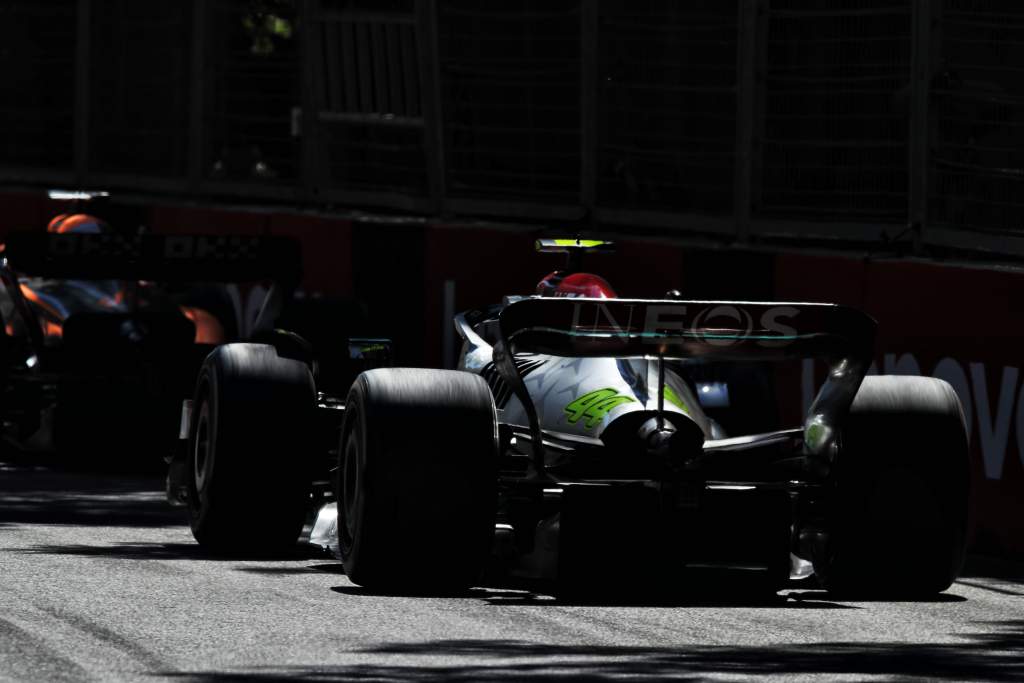
That process was massively disrupted by the aggressive porpoising problems Mercedes encountered earlier this year.
The team had to direct so much effort towards fixing that alarming issue, that it wasn’t able to devote as much of its time in the first part of the year towards tackling the fundamental problems limiting the car’s performance.
All the while, Mercedes’ simulations were telling it that if it could sort the porpoising, its car was capable of being significantly faster than Ferrari and Red Bull. This made the team incredibly reluctant to let go of the choices it had made with the W13.
A competitive Spanish GP weekend with a major upgrade package tricked Mercedes into thinking it had made a massive breakthrough, so the team only realised how badly it had gone wrong for this year in June.
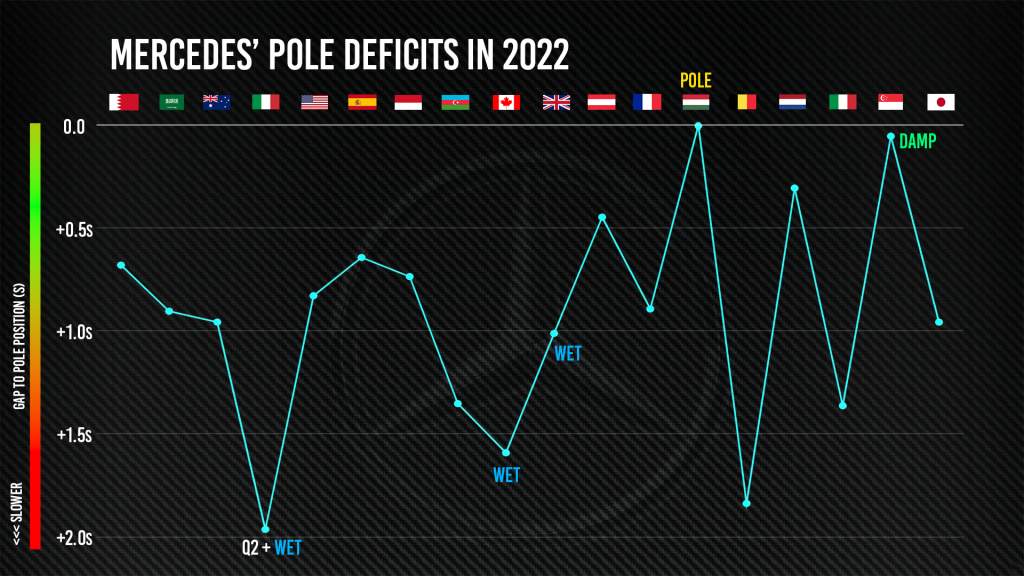
By then a lot of the damage was done, and there was a growing acceptance that completely solving the car’s weaknesses this year was unlikely.
Elliot has said Mercedes will have to wait until the winter to fully correct it for the 2023 car. Whatever that problem is, at least a portion of it is baked-in to the 2022 car. Like the sidepods, perhaps?
Our understanding is that it’s not quite that straightforward. But the clues our F1 journalists have picked up suggest the characteristics of the car that are linked to the skinny sidepods could be a factor.
One of the big problems Mercedes has been unable to fix on this car is related to the exposed floor. Having so much of the floor unsupported and sticking out from the side of the car can cause it to act like a cantilever.

This affects how the floor moves and behaves, which impacts how air is being fed under the car at the throat of the floor – which is more crucial than ever with 2022’s ground effect rules.
If this airflow stalls, as we believe can be the case on the Mercedes, then it will shed heaps of performance.
We also understand that Mercedes committed to a rear suspension design that was based around getting the most out of this floor concept, and having such a key part of the mechanical platform of the car locked in could be the main thing that Mercedes can’t fix until next year.
That, plus how the team packaged the internals of its car to create the size-zero design, could be limiting factors that would have prevented Mercedes switching to bulkier sidepods in the same way McLaren and Williams have.
And just for clarity, none of this is to suggest that Mercedes would have been better off with the bigger launch-spec sidepods it ran at the first test in Barcelona this year.
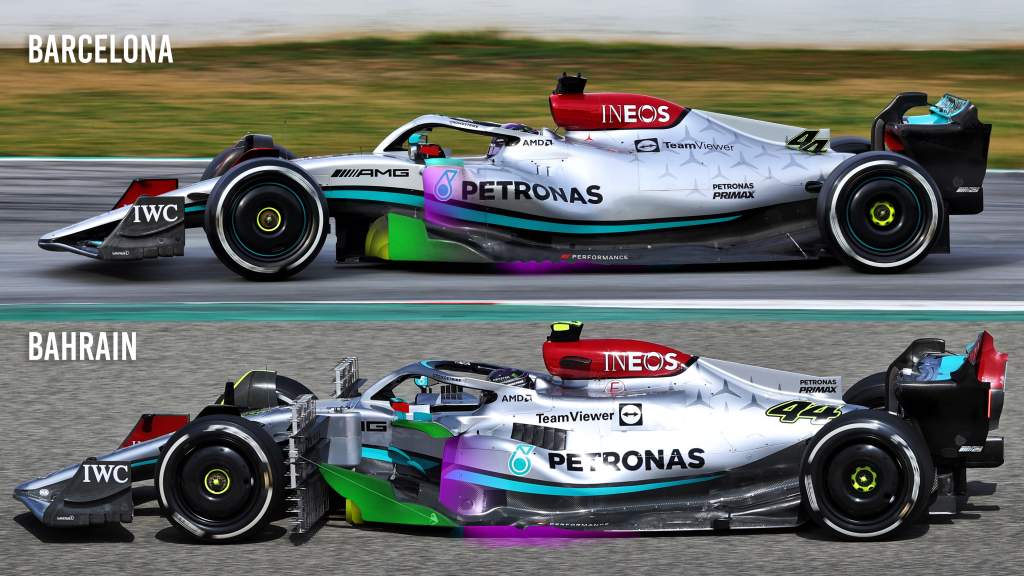
They were just an unrefined version of what it has now, so we believe the team when it says the slimmer spec is better than the first version we saw.
In public, Mercedes has insisted all year that its sidepods are a red herring when it comes to identifying the cause of its drop-off in form.
The team remains convinced that the performance it’s missing this year is coming from other parts of the car, and that any losses or gains from the sidepods are minimal.
Elliott believes claims about Mercedes’ car being so different to everyone else’s meaning it must work differently are wide of the mark. Mercedes thinks it’s not a “massive departure” from what everyone else is doing, and it’s still saying that the sidepod idea no one else has pursued is adding performance. Only a little bit, but performance nonetheless.
“When you look at the sidepod, people say ‘it looks very different, that must work completely different to the rest of the cars’, and it doesn’t, it’s just a slightly different solution,” said Elliott.
“Aerodynamically I don’t think it’s a massive departure from the other cars, it’s just something that adds a little bit of performance for us.”
But is there more performance available by going down a similar route to everyone else, and particularly in redesigning the other limiting factors of the W13 to suit that concept properly for next year’s W14?
Eliott says that the only way Mercedes could get that answer would be to run simultaneous development programmes on both routes. Perhaps that’s not feasible under the restrictions of F1’s budget cap, or perhaps Mercedes has done just that behind the scenes, and it doesn’t want to tell us – which would be completely understandable.
Mercedes remains convinced that the sidepods are not a “game changer”, with Elliott insisting that tackling its problems is less about the shape of the car, and more about the way the team approaches its development.
But we understand that Mercedes is indeed open to switching to bigger sidepods next year. To quote a favoured Toto Wolff line – there are no sacred cows in that team, so we can expect that pride or a desire to be different won’t get in the way, and the sidepods will change if they need to.
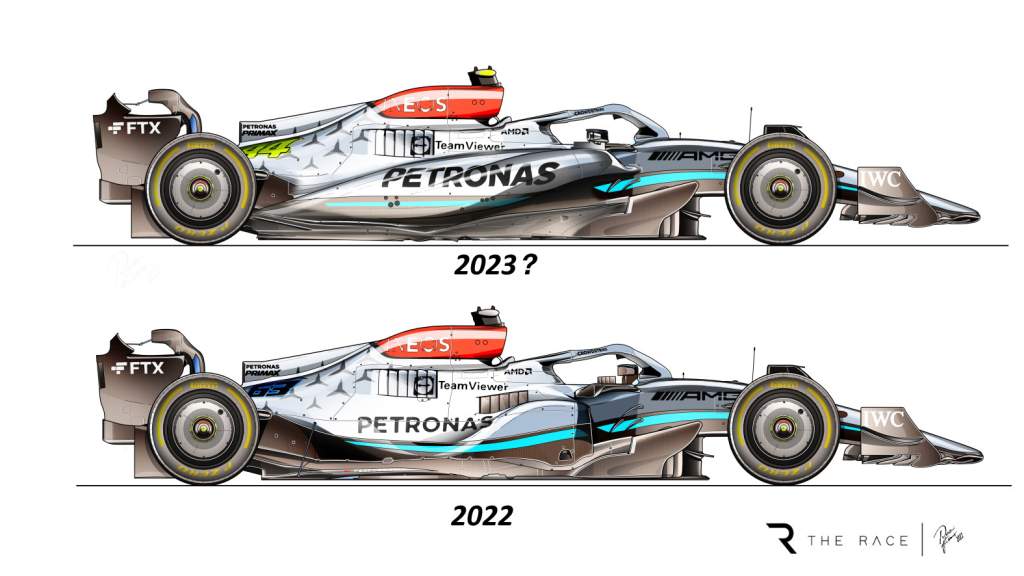
The 2023 Mercedes will almost certainly be a better car than the troubled 2022 version – and whether it’s a coincidence or not, we strongly suspect it’ll look very different on the surface too.
Given the clues we’ve seen, we wouldn’t be surprised at all if the 2023 Mercedes arrives in Bahrain for pre-season testing with sidepods that bring it into line with the rest of the grid, and this year’s super-skinny design is consigned to the scrapheap as the latest clever technical innovation that didn’t work out.


